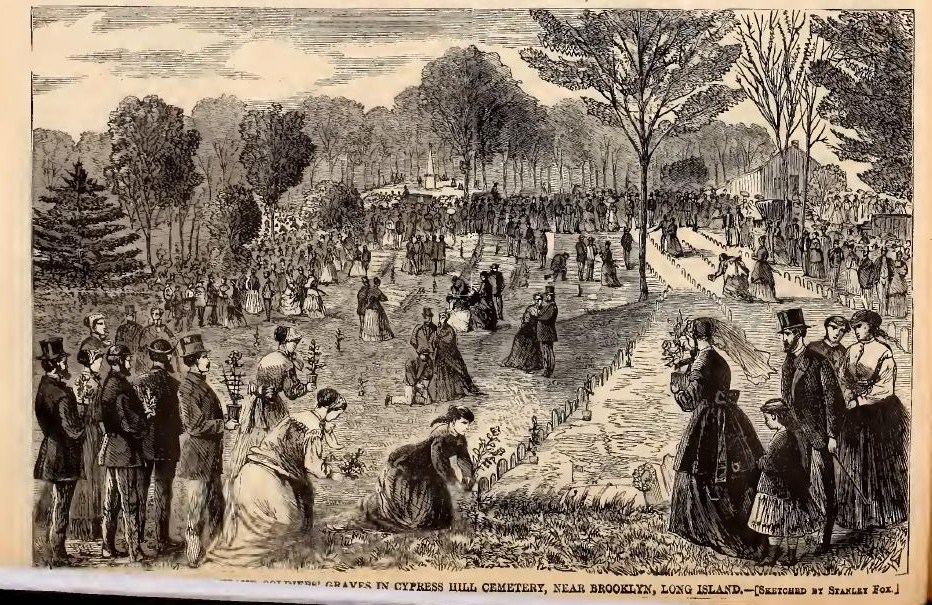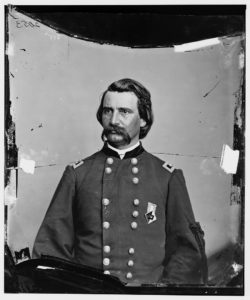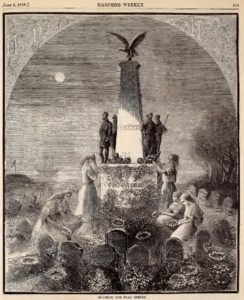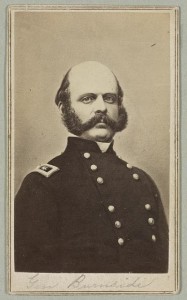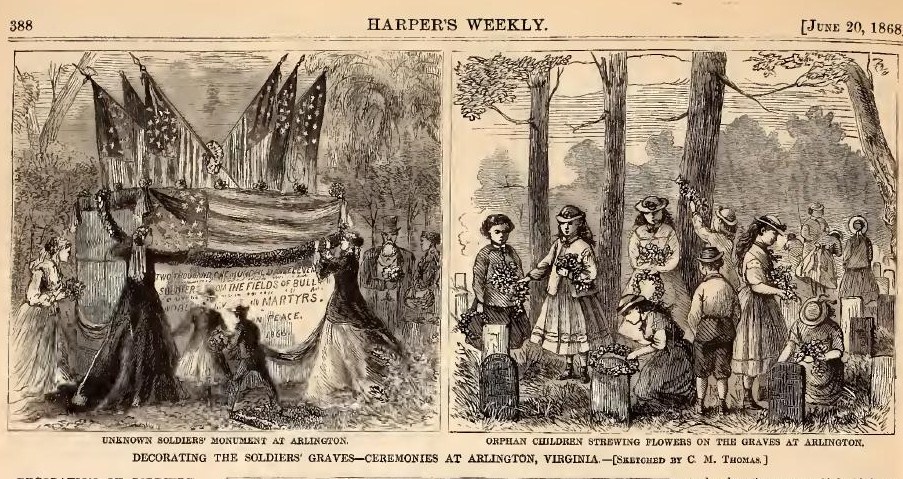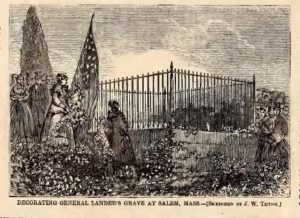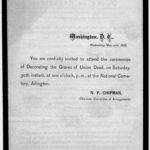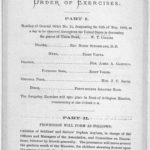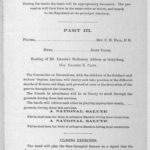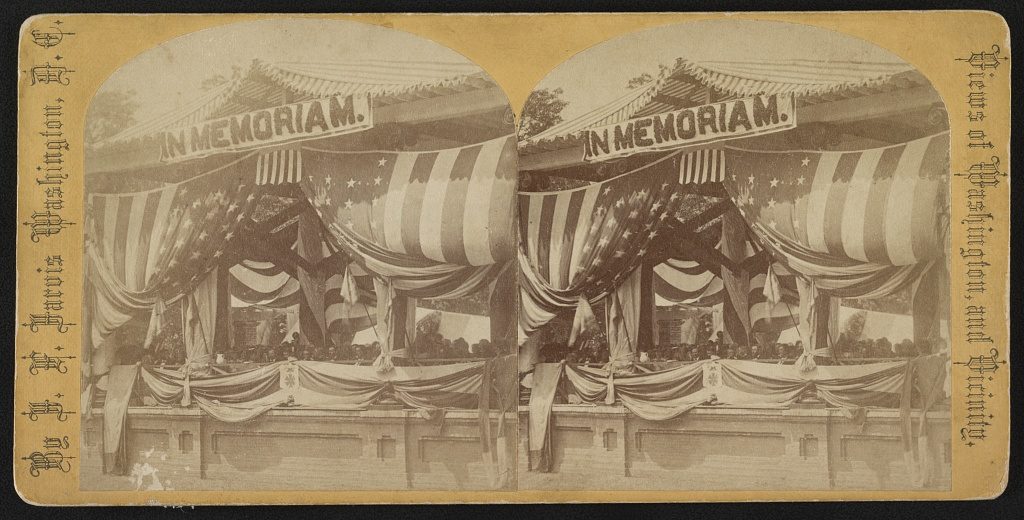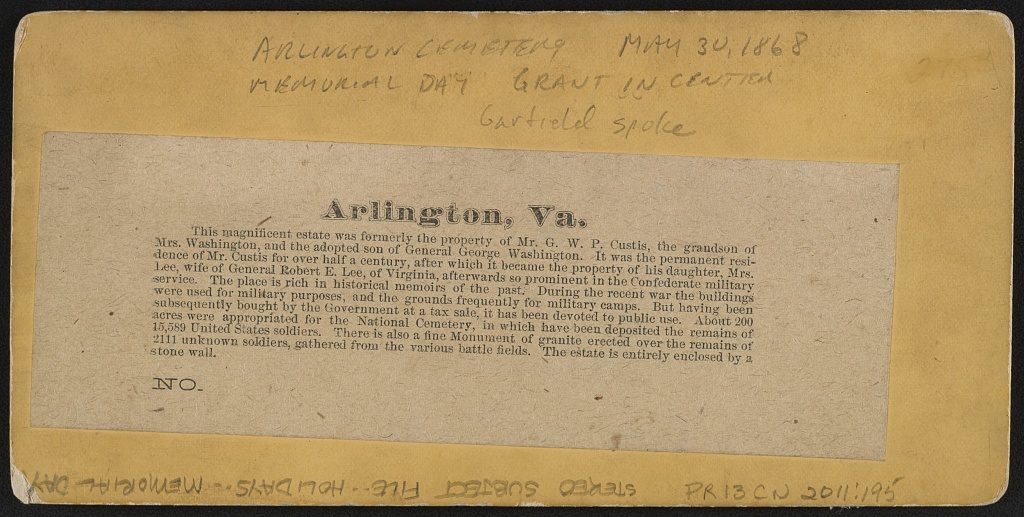Civil War general John A. Logan has been in the news a lot lately. As a Representative from Illinois he was one of seven House managers during the Impeachment trial of President Andrew Johnson. The U.S. Senate eventually acquitted the president on May 26, 1868. In Chicago on May 21, 1868 Mr. Logan nominated Ulysses S. Grant to be the Republican party’s candidate for president. That move was much more successful – General Grant was unanimously endorsed on the first ballot. And on May 5, 1868, as commander of the Grand Army of the Republic, Logan issued an order that all comrades should decorate the graves of dead Union servicemen with flowers on May 30th. A publication from 150 years ago publicized the order and then reported on some of the May 30th observations and decorations.
From Harper’s Weekly, June 6, 1868 (pages 365-366):
HONORING OUR DEAD HEROES.
The 30th of May was appointed, by General JOHN A. LOGAN, commanding the Grand army of the Republic, as a day on which the late soldiers of the Union belonging to that organization should unite in strewing with flowers or otherwise decorating the graves of their comrades who fell in the late war. In this observance no form of ceremony was prescribed, but each Post of the Grand Army was urged to arrange in its own way such fitting service and testimonial of respect as circumstances would permit. “Let us,” said General LOGAN, in his address, “at the time appointed gather around their sacred remains and garner the passionless mounds above them with the choicest flowers of spring-time: let us raise above them the dear old flag they saved from dishonor; let us in this solemn presence renew our pledges to aid and assist those whom they have left among us a sacred charge upon a nation’s gratitude, the soldier’s and sailor’s widow and orphan.”
It is hoped and believed that this ceremony thus inaugurated may grow into a custom which will be kept up from year to year. Our engraving on the preceding page, from a design by CHARLES PARSONS, is intended to commemorate the order, and as a tribute to our fallen heroes.
From Harper’s Weekly, June 20, 1868 (page 387):
THE TRIBUTE TO THE DEAD UNION SOLDIERS.
From all parts of the country we have the most striking and interesting accounts of the celebration of the day designated for strewing with flowers the graves of the Union soldiers. General GRANT was present at the cemetery at Arlington, near Washington, and General HANCOCK was also there. General BURNSIDE presided at the ceremonies in Rhode Island. In many places business was suspended, and both the numbers that attended, and the generous and manly speeches that were made – in no instance that we have seen breathing the least hostile feeling – were just illustrations of the depth and sincerity of the honor in which the memory of the brave boys is held.
From Harper’s Weekly, June 20, 1868 (page 388):
DECORATION OF SOLDIERS’ GRAVES.
The order of General JOHN A. LOGAN to the Grand Army of the Republic, setting apart May 30 as an occasion on which to honor the memory of the dead soldiers of the Union Army, was generally observed, not only by that organization but by our citizens in general.
Our illustrations are from several sources. The ceremonies at Arlington, Virginia, the former home of the rebel General LEE, but now a cemetery, were of a most interesting character. Arlington House was decorated with flags and crepe and presented a strange and unusual appearance; an oration was delivered by Mr. GARFIELD of Ohio, and an original poem read. After this a procession was formed which moved to the tomb of the unknown soldiers who fell in Virginia during the early part of the war. This tomb is a massive granite structure, bearing an inscription to the effect that beneath the stone reposes 2111 unknown soldiers gathered after the war from the fields of Bull Run and the route to the Rappahannock, whose remains could not be identified by the names and dates of record in the archives. The tomb was tastefully decorated with flags and evergreens. Subsequently the children of the orphan asylum deployed and took positions at the different flower-stands, where they were provided with baskets of flowers, and the proceeded through the cemetery, strewing the flowers upon the mounds as they passed. The ceremony was simple, yet impressive, and many of the spectators followed the procession and added their floral offerings. The scene impressed one more fully with its solemnity as there broke upon the ear at intervals the low booming of a cannon.
Another illustration represents the scene at Salem, Massachusetts, showing more particularly the decoration of the grave of General FREDERICK W. LANDER. The other graves having been decorated, the line was drawn up before the General’s resting-place, the band playing a dirge, and after Commander Pearson [?] had placed upon the tomb several beautiful emblems prepared by the hands of Mrs. LANDER, the hero’s widow, the members of the Grand Army, and the soldiers and sailors, uncovered, passed by and each one threw upon the tomb a floral offering.
There are over 3,000 Union soldiers buried in Cypress Hill Cemetery, near Brooklyn, Long Island, and the scene which here occurred on May 30 was most impressive and yet pleasing. Several thousand old soldiers and citizens marched to the ground, and after listening to an oration, engaged, as our illustration represents them, in the work of decorating the mounds under which the soldiers repose.
According to the Library of Congress, invitations were sent out for the Arlington ceremony:
____________________________
It looks like Harper’s might have gotten its wish of May 30th becoming a customary day to commemorate the dead servicemen and their graves. At least as of 1873 Decoration Day was still being observed at the Arlington Cemetery.

